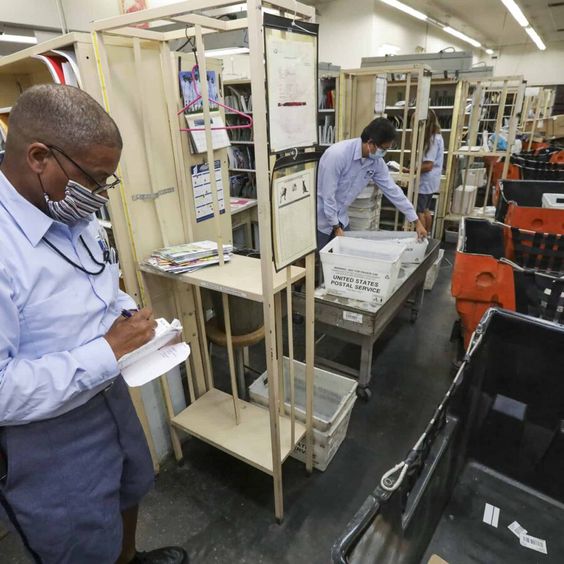Supreme court postal worker
The postal system has long been the lifeblood of a nation, connecting people and facilitating communication even in the most remote corners. At the heart of this intricate network are the dedicated postal workers who ensure the timely delivery of essential goods and information. In this blog post, we delve into the crucial role played by the Supreme Court in safeguarding the rights of postal workers, ensuring their fair treatment, and upholding the principles of justice and democracy.
The Genesis of Postal Worker Rights: A Historical Perspective:
To understand the significance of the Supreme Court’s involvement, we must trace the evolution of postal worker rights. The Postal Reorganization Act of 1970 marked a turning point, transforming the United States Post Office Department into the United States Postal Service (USPS) as an independent agency. This shift laid the groundwork for collective bargaining and labor protections for postal workers. However, challenges persisted, necessitating legal intervention to secure their rights.
Landmark Cases: Paving the Path to Justice:
Over the years, the Supreme Court has taken up several pivotal cases that have shaped the landscape of postal worker rights. One notable case is NLRB v. National Letter Carriers’ Association (1973), where the Court upheld the rights of postal workers to engage in collective bargaining and protect their interests.
In Cleveland Board of Education v. Loudermill (1985), the Court’s decision set a precedent by affirming the due process rights of public employees, including postal workers. This case highlighted the need for fair hearings before adverse employment actions, ensuring justice for all.
Furthermore, Rutan v. Republican Party of Illinois (1990) extended protection against political discrimination to public employees, guarding postal workers from bias based on their political affiliations. This marked a stride towards maintaining a politically neutral and just work environment.
Challenges and Triumphs: Navigating Labor Disputes:
Labour disputes have always posed challenges to the postal system. One of the most significant labor actions was the 1970 nationwide postal strike. The Supreme Court’s intervention, in this case, emphasized the importance of preserving essential services while acknowledging the legitimate concerns of the workers. This event highlighted the role of the Court in mediating between conflicting interests and maintaining the uninterrupted flow of mail.

Adapting to the Digital Age: E-Commerce and the Modern Postal Worker:
As the digital age advances, the role of the postal worker continues to evolve. With the rise of e-commerce, postal workers are not only tasked with mail delivery but also the distribution of packages from online retailers. This shift has led to discussions about worker classification, employment status, and labor rights in the gig economy. The Supreme Court’s role in interpreting existing laws and adapting them to the changing landscape remains crucial.
Also Discover: Student Loan Forgiveness Supreme Court
Preserving Worker Dignity: Addressing Workplace Harassment:
Workplace harassment is an issue of growing concern in all industries, including the postal service. The Supreme Court’s decisions regarding workplace harassment set benchmarks for defining employer liability and ensuring a safe working environment. Cases such as Faragher v. City of Boca Raton (1998) and Burlington Industries, Inc. v. Ellerth (1998) have outlined the standards for employer responsibility in preventing and addressing harassment, directly impacting the postal sector.
Challenges on the Horizon: Navigating Technological Shifts:
The digital age brings with it new challenges that require careful consideration from the Supreme Court. Automation and artificial intelligence are transforming various industries, including the postal sector. While automation can enhance efficiency, it also raises questions about potential job displacement and the rights of workers. The Supreme Court’s interpretation of existing labor laws in the context of these technological shifts will play a crucial role in ensuring that postal workers are not left behind and that their rights are protected in this changing landscape.
Ensuring Equal Treatment: The Struggle for Pay Equity:
Pay equity remains a contentious issue, transcending industries and impacting the postal workforce as well. Historically, women and minority workers have faced disparities in wages and opportunities. The Supreme Court’s role in shaping the interpretation of anti-discrimination laws, such as the Equal Pay Act and Title VII of the Civil Rights Act, has far-reaching implications for postal workers. Ensuring that workers are compensated fairly and that discriminatory practices are eradicated is vital to maintaining a just and equitable workplace.

Guardians of Collective Bargaining: Strengthening Union Rights:
Collective bargaining empowers workers to negotiate for better working conditions, wages, and benefits. The Supreme Court’s rulings on cases related to union rights profoundly affect the ability of postal workers to engage in collective bargaining without hindrance. Recent cases like Janus v. AFSCME (2018) have raised debates about the legality of requiring public sector employees to pay union dues, impacting the financial stability of unions. The Court’s decisions can shape the strength and influence of postal worker unions in advocating for their members’ rights.
Also Read: What is the difference between a lawyer and an attorney
Environmental Concerns and Sustainability: A New Frontier:
In an era of heightened environmental awareness, sustainability has become a critical consideration for all industries, including the postal sector. The Supreme Court’s role in interpreting environmental regulations and their impact on postal operations can influence the industry’s efforts to reduce its carbon footprint. This includes decisions related to vehicle emissions, packaging materials, and overall ecological responsibility. Postal workers play a crucial role in these efforts, and the Court’s perspective can help guide the sector toward more sustainable practices.
Globalization and Cross-Border Challenges:
Globalization has expanded the scope of postal operations, introducing new challenges related to international shipping, customs regulations, and trade agreements. The Supreme Court’s role in interpreting international treaties and agreements can significantly impact how postal workers engage with these complexities. Ensuring that postal workers’ rights are respected across borders and that they are adequately protected in global trade contexts requires thoughtful consideration from the highest court.
Conclusion:
The role of the Supreme Court in safeguarding the rights of postal workers remains as crucial today as it was when the postal system was first established. As the world undergoes rapid transformations driven by technology, environmental concerns, and evolving labour dynamics, the Court’s interpretations and decisions will continue to shape the path forward for postal worker rights. Just as postal workers ensure the seamless functioning of communication, the Supreme Court ensures the seamless functioning of justice. By addressing emerging challenges, upholding historical rights, and promoting fairness, the Court remains an essential guardian of democracy, securing the dignity and rights of postal workers for generations to come.
FAQs:
What is the role of the Supreme Court in safeguarding postal worker rights?
The Supreme Court plays a crucial role in interpreting the laws and regulations that govern the rights of postal workers. It hears cases that involve disputes related to labor rights, workplace discrimination, collective bargaining, and more. Through its decisions, the Court establishes legal precedents that shape the rights and protections afforded to postal workers.
How does the Supreme Court adapt to the changing technological landscape affecting postal workers?
As technology evolves, the Supreme Court interprets existing laws in the context of new challenges like automation, AI, and the gig economy. The Court’s decisions impact issues such as job displacement, worker classification, and employment rights in the digital age, ensuring that postal workers are not left behind and their rights are protected.
How does the Supreme Court address pay equity concerns among postal workers?
The Supreme Court’s interpretation of anti-discrimination laws, such as the Equal Pay Act and Title VII of the Civil Rights Act, shapes the efforts to achieve pay equity. The Court’s decisions impact the elimination of wage disparities based on gender, race, or other protected characteristics, ensuring that postal workers are compensated fairly.
What role does the Supreme Court play in relation to union rights for postal workers?
The Supreme Court’s decisions on cases related to union rights have a significant impact on the ability of postal workers to engage in collective bargaining and advocate for their rights. Cases like Janus v. AFSCME (2018) have raised debates about union dues and their legality, affecting the financial stability and influence of postal worker unions.
How does the Supreme Court address environmental concerns in the postal sector?
The Supreme Court’s interpretation of environmental regulations impacts how the postal sector addresses sustainability challenges. The Court’s decisions can influence efforts to reduce the environmental footprint of postal operations, including aspects such as vehicle emissions, packaging materials, and ecological responsibility.
